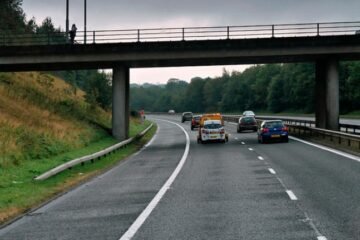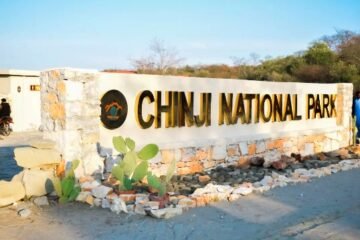A team of archaeologists has unearthed a cobbled road that dates back to the first century and was used by some of the most influential figures in British history.
The road that connected empires and kingdoms
The road was built by the Roman armies of general Julius Agricola, who invaded Scotland in 79 AD and established a series of forts and settlements along the River Forth. The road would have linked these outposts and provided a strategic crossing point for the river.
The road was also used by the Picts, the ancient people who resisted the Roman occupation and eventually drove them out of Scotland. The road was later used by medieval kings and queens of Scotland, such as MacBeth, Kenneth McAlpin and Robert the Bruce, who fought for the independence and sovereignty of their nation.
The road was also a route for military campaigns by foreign invaders, such as William the Conqueror, who crossed the Forth in 1072 to assert his authority over Scotland, and Oliver Cromwell, who marched his army along the road in 1650 to crush the Scottish resistance.
The discovery that surprised the locals
The road was uncovered during an exploratory dig in the garden of the Old Inn Cottage, next to the 18th century Old Drip Bridge, a few miles west of Stirling city centre. The cottage is a former drovers inn built in the 17th century, and the resident Jennifer Ure had no idea that the ancient road was buried in her garden until approached by Stirling Council archaeologist, Murray Cook, who believed the route may go through there and arranged the dig.

He said: “It is the most important road in Scottish history so it’s an amazing discovery. To literally walk where Wallace and Bruce went, let alone the Romans, Picts and Vikings is astonishing. It has also never been clear before this find where this road ran.”
Mrs Ure, who lives in the cottage with her family, said: “It’s amazing to think the likes of William the Conqueror and King Henry VIII had walked through where our garden is now – not many people can say that.”
The road that reveals the secrets of the past
The road is made of cobbles and is about 4.5 meters wide. It is remarkably well-preserved and shows signs of wear and tear from centuries of use. The road also has traces of metal, which could indicate the presence of horseshoes, nails or weapons.
The road is a valuable source of information for archaeologists, historians and enthusiasts, as it sheds light on the Roman occupation of Scotland, the Pictish culture and the medieval politics and warfare. The road also offers insights into the landscape, environment and climate of the past, as well as the engineering and construction skills of the ancient builders.
The road is also a rare example of a Roman road that has survived in its original location, as most of the Roman roads in Britain have been destroyed or covered by modern roads and buildings.
The road that needs protection and preservation
The road is currently under threat from erosion, vandalism and development, as it is located in a private property and is not protected by any heritage status. The road is also vulnerable to the effects of climate change, such as flooding and landslides, which could damage or wash away the ancient cobbles.
The road is in need of urgent conservation and management, as well as public awareness and education. The road is a national treasure and a historical legacy that should be cherished and shared by the present and future generations.
The road is also a potential tourist attraction and a cultural asset that could boost the local economy and community. The road could be integrated into the existing heritage trails and networks, such as the Antonine Wall and the Forth Valley Heritage Route, and could offer visitors a unique and immersive experience of the past.
The road that awaits further exploration and investigation
The road is only partially exposed and its full extent and route are still unknown. The road could run for several miles and could connect to other Roman sites and structures, such as forts, camps and bridges.
The road could also reveal more secrets and surprises, such as artifacts, inscriptions and burials, that could enhance our understanding of the history and culture of the people who used the road.
The road is a subject of ongoing research and investigation, as well as a challenge and an opportunity for archaeologists and enthusiasts. The road is a mystery and a marvel that invites further exploration and discovery.


















